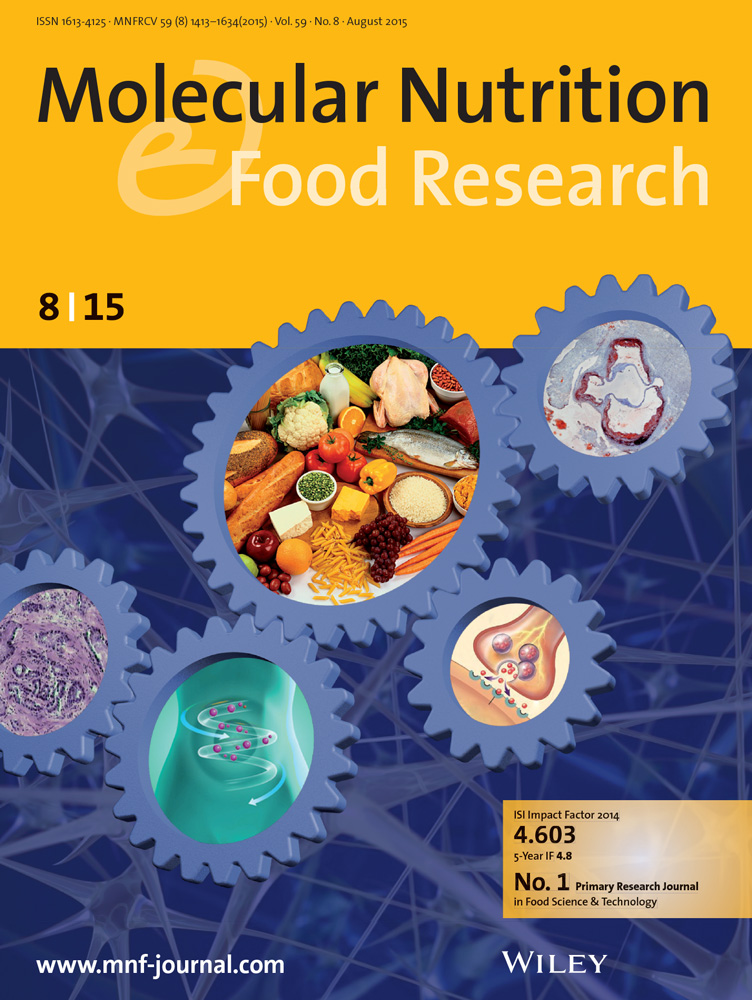Sulfated Polysaccharides From Gracilaria gracilis (Red Seaweed) Restores Testicular Glucose Metabolism by Improving FSH and Insulin Signaling in Rats With Type 2 Diabetes
IF 4.2
2区 农林科学
Q1 FOOD SCIENCE & TECHNOLOGY
引用次数: 0
Abstract
Testicular glucose homeostasis plays important roles in testicular energy metabolism and male fertility, but it is altered in type 2 diabetes (T2D), leading to male infertility. In the present study, the therapeutic effect of sulfated polysaccharides (SPCs) from红藻硫酸酸化多糖通过改善2型糖尿病大鼠FSH和胰岛素信号恢复睾丸糖代谢
睾丸葡萄糖稳态在睾丸能量代谢和男性生育能力中起重要作用,但在2型糖尿病(T2D)中发生改变,导致男性不育。本实验研究了股薄草硫酸多糖(SPCs)对t2dm大鼠睾丸糖代谢的影响。两组T2D大鼠分别给予150和300 mg/kg体重的SPCs。T2D对照组仅给予水治疗,标准治疗组给予二甲双胍作为对照药物。非T2D大鼠为正常组。治疗5周后,处死大鼠,取其睾丸,分析胰岛素、促卵泡刺激素、葡萄糖和谷胱甘肽代谢。SPCs治疗导致胰岛素、IRS‐1、FSH、GLUT4、GSH、ATP水平、己糖激酶、葡萄糖6‐磷酸脱氢酶、乙草醛酶、谷胱甘肽还原酶和谷胱甘肽过氧化物酶活性显著增加,同时改善睾丸形态。SPCs进一步导致糖原磷酸化酶、葡萄糖6‐磷酸酶、果糖- 1,6‐双磷酸酶、醛糖还原酶、多元醇脱氢酶、atp酶和entpase活性显著降低。这些结果表明,股薄草SPCs具有提高T2D雄性生殖力的潜力。其改善胰岛素-卵泡刺激素信号、葡萄糖、能量代谢和睾丸形态的能力证明了这一点。
本文章由计算机程序翻译,如有差异,请以英文原文为准。
求助全文
约1分钟内获得全文
求助全文
来源期刊

Molecular Nutrition & Food Research
工程技术-食品科技
CiteScore
8.70
自引率
1.90%
发文量
250
审稿时长
1.7 months
期刊介绍:
Molecular Nutrition & Food Research is a primary research journal devoted to health, safety and all aspects of molecular nutrition such as nutritional biochemistry, nutrigenomics and metabolomics aiming to link the information arising from related disciplines:
Bioactivity: Nutritional and medical effects of food constituents including bioavailability and kinetics.
Immunology: Understanding the interactions of food and the immune system.
Microbiology: Food spoilage, food pathogens, chemical and physical approaches of fermented foods and novel microbial processes.
Chemistry: Isolation and analysis of bioactive food ingredients while considering environmental aspects.
 求助内容:
求助内容: 应助结果提醒方式:
应助结果提醒方式:


